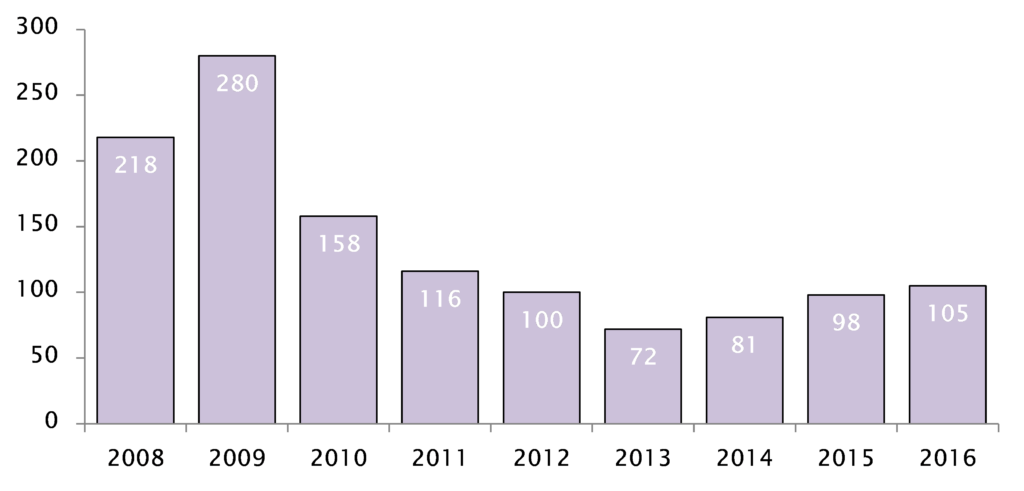Publications that covered this story include City AM on 3 January 2017.
- But number of companies on AIM has dropped by over 800 since shakeout in 2008
- Number of companies de-listing from AIM continues to rise
- Just 44 new entrants to AIM in 2016
M&A activity on the Alternative Investment Market (AIM) has risen sharply with 34 companies being taken over in 2016 a fifth more the 28 taken over in 2015, according to our latest research.
The last quarter of 2016 saw a particularly sharp rise in M&A activity with 13 AIM companies being acquired compared to eight in Q4 2015.
The rise in AIM M&A has partly been driven by the fall in sterling with 70% of the bids for AIM companies in Q4 coming from overseas.
We state that the increase in takeovers of AIM companies shows the junior stock market is playing its role as an incubator of valuable companies. However, the increase in M&A is also accelerating the overall reduction in the number of companies listed on AIM.
105 companies cancelled their AIM listing in 2016 which, after taking into account companies joining AIM, meant a net loss of 61 companies from AIM in 2016 (see graph). Of the 105 companies leaving AIM in 2016, 46 companies left AIM either because of financial stress or because of a failure of strategy (see graph below).
There are now just 993 companies on AIM down 41% from the peak of 1694 at the end of 2007.
Laurence Sacker, managing partner for our London and Nottingham offices, explains that the London Stock Exchange launched a review of the market’s rules in 2006, which resulted in a tightening of market requirements, which coupled with the economic environment from 2007 onwards, has caused a reduction in the number of underperforming companies on the market. Whilst that has meant the average size of companies that have stayed on AIM has increased it has also made it harder for the market to replace companies delisting from AIM.
Some commentators have also raised concern that the London Stock Exchange’s prospective merger with Deutsche Borse may eventually result in the end of AIM and this uncertainty would inevitably make it more difficult to attract high quality smaller companies onto AIM.
We add that in order to increase the number of IPOs the market must make sure it remains attractive to potential companies, particularly to international companies looking to raise capital.
Laurence comments: “The continued shrinkage of AIM is not great, and if this continues at the present rate then the future of the market may be in doubt. There does need to be a lot more of an effort to market AIM to UK and international companies.”
“It’s vital that AIM appears welcoming to all companies looking to raise capital- particularly to foreign companies, as after Brexit there may now be a perception that London is not the place to be.”
“Cutting costs associated with listing or increasing AIM’s outreach programme could make a big difference in the number of companies choosing to list on the market.”
“Instead of listing on a junior market such as AIM, private equity and venture capital firms are increasingly seen as the preferred choice for companies looking to raise capital- particularly for start-ups.”
“The increase in M&A shows that AIM works.”
Number of IPOs increases- 44 new companies listed on the AIM market in 2016

Number of companies leaving AIM rises to 105 in 2016

*Year end 31 December.


